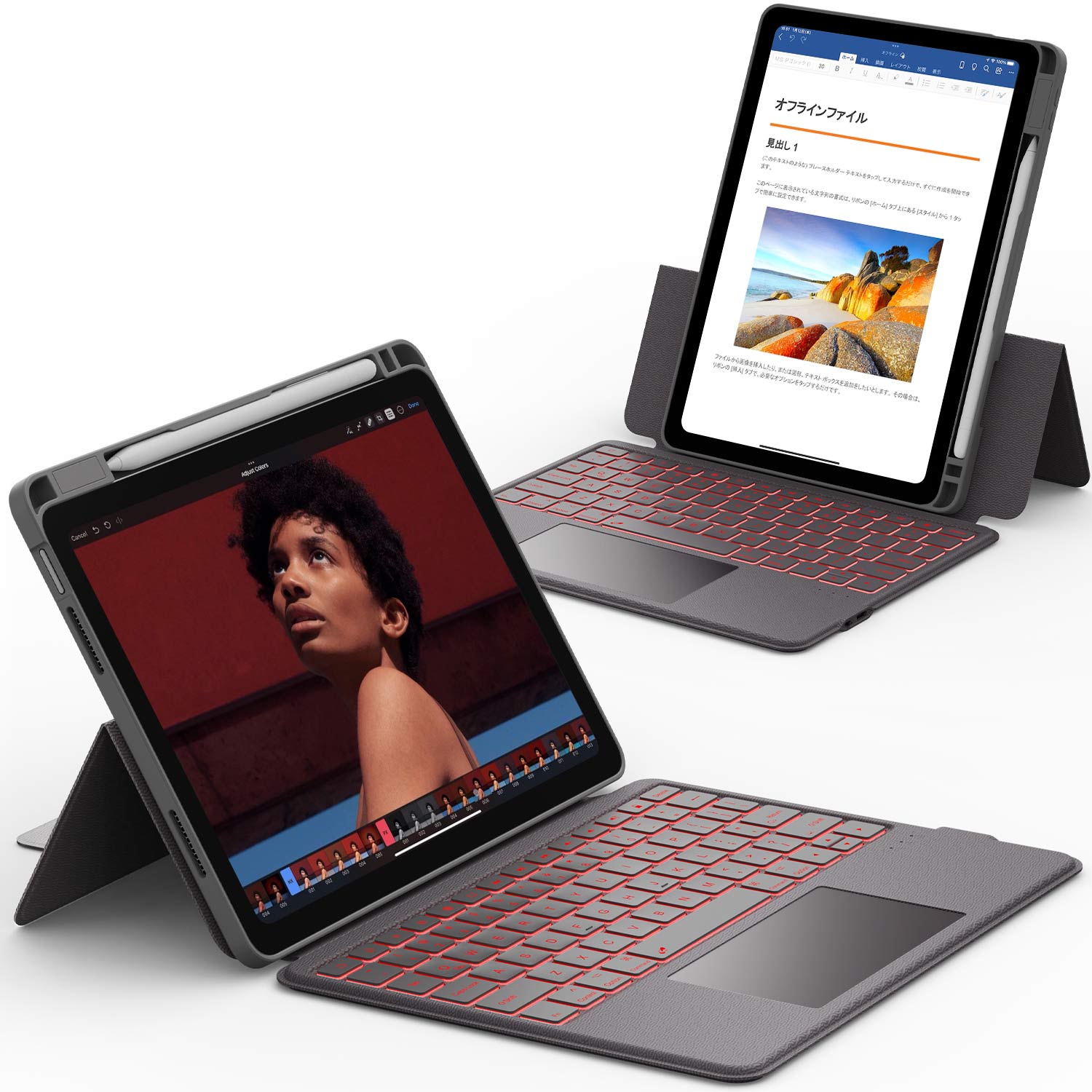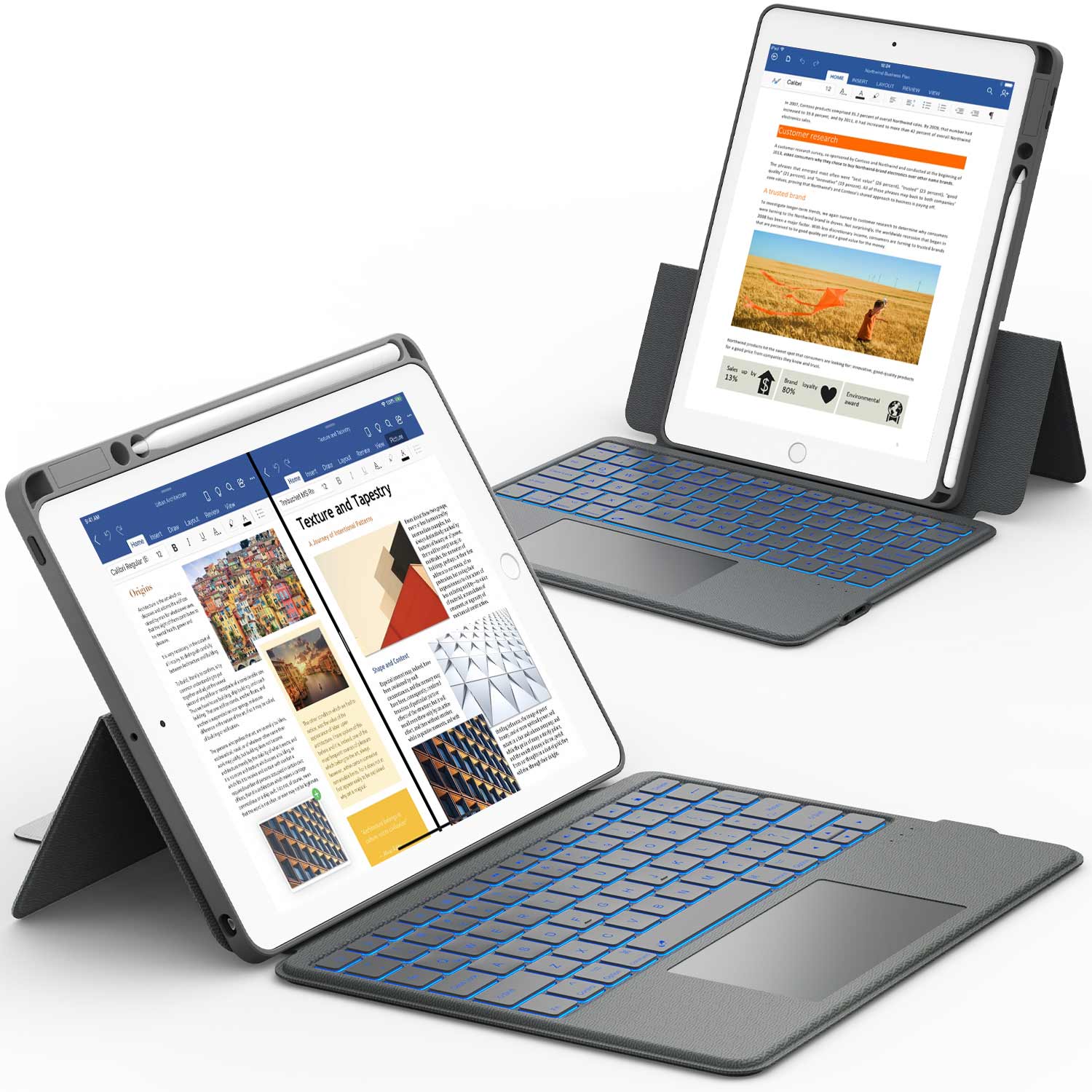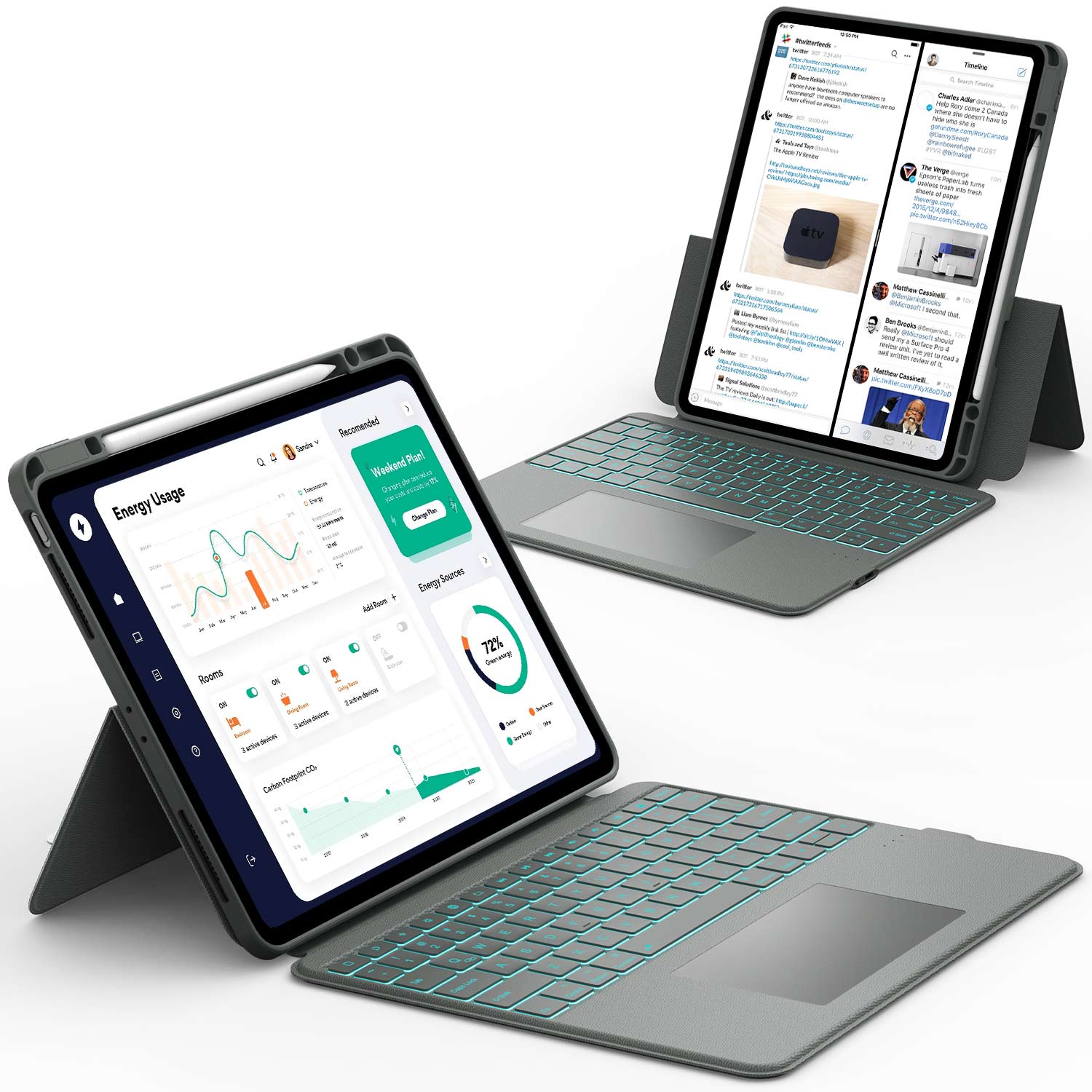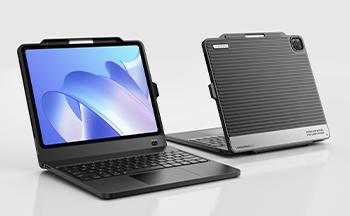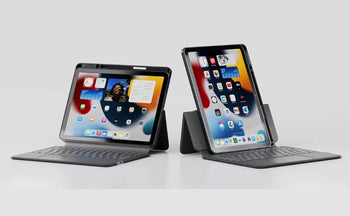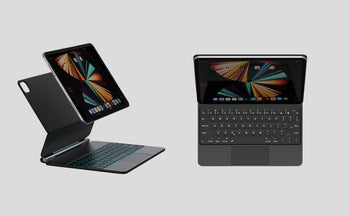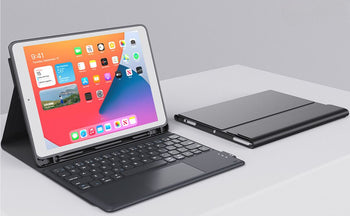Is your iPad not charging despite being plugged in? Few tech problems are more frustrating than grabbing your tablet only to find it's out of power when you need it most. Don't panic – this is a common issue with several potential solutions.
In this guide, we'll walk through simple troubleshooting steps that solve most charging problems, from checking your cables to examining software issues. Before spending money on repairs or replacements, try these proven fixes that have helped thousands of iPad users get their devices charging again.
Prevent charging port damage with superior protection. Our Heavy-Duty iPad Cases shield vulnerable connections while maintaining easy access for charging.
1: Check Your Charging Equipment

Faulty equipment is a common reason for iPad charging problems. Swapping cables or adapters often resolves the issue quickly.
Inspect the Lightning Cable for Damage
Take a good look at your charging cable. See any fraying, bent connectors, or exposed wires? That's likely your problem. Even small damage can stop your iPad from charging.
Bend the cable gently (when unplugged) to check for hidden breaks. Wipe the metal ends with a clean cloth to remove any dust or lint.
The quickest test? Try a different cable. Genuine Apple cables or certified ones work best – those cheap knockoffs often can't deliver enough power.
Test Different Power Adapters
Your iPad is power-hungry compared to an iPhone. While iPhone chargers typically deliver 5W, iPads need at least 12W to charge properly.
If you see "Not Charging" on your screen while plugged in, your adapter is probably too weak. Your iPad is using power faster than it's charging.
Borrow a friend's iPad charger or try another Apple adapter you have. Using a newer iPad Pro? Those need even more powerful USB-C chargers (18W+).
Try Alternative Power Sources
Wall outlets are your best bet for charging. If one outlet isn't working, try another in a different room.
Computer USB ports often disappoint for iPad charging – they're too weak. Most deliver half the power iPads need, though newer USB 3.0 ports work better.
Power banks can save the day, but check the specs. Look for "2.1A output" for proper iPad charging.
Car chargers and airplane chargers are convenient but weak. They might keep your iPad from dying while you use it, but don't expect a full charge anytime soon.
2: Examine Your iPad's Charging Port

Your iPad's charging port often causes charging issues. Small problems with this port can prevent power from reaching your device's battery.
Look for Debris or Damage
Your iPad's charging port is a magnet for pocket fuzz, dust, and crumbs. This tiny buildup can block your charger from connecting properly. Grab a flashlight and take a peek inside – you might be surprised by what's collected in there.
Check for any obvious damage too. Bent pins or cracks around the port edges are bad news. If the port looks crushed or seriously damaged, you'll likely need professional help.
Had a water incident recently? Moisture in the port can prevent charging. Let your iPad dry completely (at least 24-48 hours) before trying to charge it again.
Safely Clean the Charging Port
Be gentle when cleaning your iPad's charging port. Never use metal objects that could damage the delicate connections inside.
Safe cleaning tools:
- Soft, dry toothbrush
- Compressed air can (use short, gentle bursts)
- Wooden toothpick (with extreme care)
Power off your iPad before cleaning. Hold the device with the port facing downward to let gravity help remove loosened debris. Gently brush or blow into the port. For stubborn debris, use a wooden toothpick carefully.
Avoid using liquids of any kind in the charging port. Even small amounts of moisture can cause further damage.
3: Check for Software Issues

Sometimes software glitches in your iPad's operating system cause charging problems. These issues can prevent your device from recognizing the charger or managing power properly.
Force Restart Your iPad
A simple force restart can fix many software issues. This process clears temporary memory without deleting your data.
For iPads with Home buttons, press and hold both the Home and Top (or Side) buttons for about 10-15 seconds until the Apple logo appears.
For iPads without Home buttons, quickly press and release the Volume Up button, then Volume Down button, and finally press and hold the Top button until the Apple logo appears.
After your iPad restarts, connect it to the charger and wait a few minutes to see if it begins charging.
Update iOS to the Latest Version
Outdated software can cause charging issues. Apple regularly releases updates that fix bugs and improve charging.
To check for updates:
- Connect to Wi-Fi
- Go to Settings > General > Software Update
- If an update is available, tap "Download and Install"
If your iPad battery is too low to update, charge it for at least 30 minutes first. You might need to use a different charger or cable temporarily to get enough power for the update.
Reset All Settings
If force restarting and updating didn't solve your charging problem, resetting all settings might help. This option preserves your data but returns all settings to factory defaults.
To reset all settings:
- Go to Settings > General > Reset
- Tap "Reset All Settings"
- Enter your passcode if prompted
- Confirm by tapping "Reset All Settings"
This process resets network settings, keyboard preferences, privacy settings, and location settings. It won't delete your photos, apps, or other content.
After the reset completes, your iPad will restart. Connect it to a charger to see if the issue is resolved.
Charge your iPad without straining cables or ports. Our iPad Cases with Stands position your device perfectly while connected to power.
4: Maintain Good Battery Health and Temperature

Your iPad's battery health and device temperature play crucial roles in charging performance. When your iPad won't charge, these factors often contribute to the problem and need specific solutions.
Monitor Battery Health Status
iPads use lithium-ion batteries that degrade over time. After about 1,000 charge cycles, your battery may hold only 80% of its original capacity. This degradation can make charging seem inconsistent.
To check your iPad's battery health:
- Go to Settings > Battery > Battery Health (on newer iPadOS versions)
- Look for Maximum Capacity percentage
- Check for any battery service warnings
If your iPad shows "Service" next to the battery, it likely needs replacement. Consider professional battery replacement if your iPad is older than 2-3 years and has persistent charging issues.
Address Overheating Issues
iPads have temperature protection that pauses charging when the device gets too hot. This is a safety feature.
Common causes of iPad overheating:
- Using while charging
- Charging in direct sunlight
- Running demanding apps during charging
- Using thick, insulating cases
If your iPad feels hot and won't charge:
- Disconnect from power
- Remove any case
- Move to a cooler location
- Turn it off for 15-30 minutes
Avoid charging your iPad on soft surfaces like beds or couches. These surfaces trap heat. Hard, flat surfaces allow better air circulation.
Optimal Charging Temperatures
Your iPad charges most efficiently between 62°F and 72°F (16°C to 22°C). Temperatures outside this range can slow or stop charging.
In cold conditions (below 32°F/0°C):
- Charging will be much slower
- Battery may show lower capacity
- Device might shut down to protect itself
In hot conditions (above 95°F/35°C):
- Charging may stop completely
- Battery can sustain permanent damage
- Screen might dim or display temperature warning
Always store and charge your iPad in climate-controlled environments. If you've used your iPad outdoors in extreme temperatures, let it return to room temperature before charging.
iPad Still Not Charging? When to Seek Professional Help
Some iPad charging issues require expert assistance. Here's when and how to get professional help for persistent charging problems.
Apple Support Options
When DIY fixes fail, call in the pros. Contact Apple via their website, phone, or book a Genius Bar visit.
The Apple Support app offers the quickest help. Have your troubleshooting history ready – they'll appreciate knowing what you've tried.
Apple can run remote diagnostics to pinpoint whether it's your battery or another hardware issue causing problems.
Repair Costs vs. Replacement
Out-of-warranty battery service runs $99-$149, depending on your iPad model.
AppleCare+ members often get free battery replacement if capacity drops below 80%. Without coverage, a full device replacement costs $199-$649.
For older iPads, consider if repair costs make sense. Sometimes that money is better spent toward a newer model.
Always get a cost estimate before proceeding – Apple can help you decide what's most economical.
Data Backup Before Service
Back up before repairs! Technicians might reset or replace your device, potentially erasing everything.
Quick backup: Settings > [your name] > iCloud > iCloud Backup > "Back Up Now" (while on Wi-Fi).
Verify your backup completed and keep your Apple ID credentials handy. Using third-party repair? Remove your Apple ID first to prevent activation issues.
Stop debris from causing charging failures. Our Stain-Resistant iPad Cases keep ports cleaner for more reliable connections.
Conclusion: iPad Not Charging
Charging issues can be frustrating, but they're often fixable with the right approach. Start with the simplest solutions—checking cables and adapters—before moving to more technical fixes. For iPads that frequently suffer from charging port damage, a quality protective case with port covers can prevent debris buildup and connection problems in the first place.
If you've tried all these troubleshooting steps and your iPad still won't charge, it's probably time for professional help. Apple's technicians can diagnose deeper hardware issues that might be beyond DIY fixes.
If your kids frequently use your iPad, their rougher handling can damage charging ports and cables. Protect your device with proper protection by checking out our guide to the Best iPad Cases for Kids.
Frequently Asked Questions: iPad Not Charging
Why is my iPad plugged in and not charging?
Your iPad might not charge due to a damaged cable or incompatible adapter. Dirty charging ports often prevent proper connections. Software glitches can block charging - restart your iPad by holding the power and volume buttons simultaneously.
How do I force an iPad to charge?
Try a different wall outlet as power sources can be faulty. Use only Apple-certified charging equipment for reliable results. Force restart while connected to power by quickly pressing volume up, volume down, then holding the top button.
How do I know if my iPad charging port is damaged?
Examine the port with a flashlight for bent pins or debris. Test if cables connect firmly with a clear "click" when inserted. If multiple known-working cables fail to charge your device, the port likely needs professional repair.
How do I reset the battery on my iPad?
Completely drain your iPad until it powers off to recalibrate the battery meter. Charge uninterrupted to 100%, then keep connected for an additional hour. For unresponsive devices, hold power and home/volume buttons for 20 seconds to force reset.
